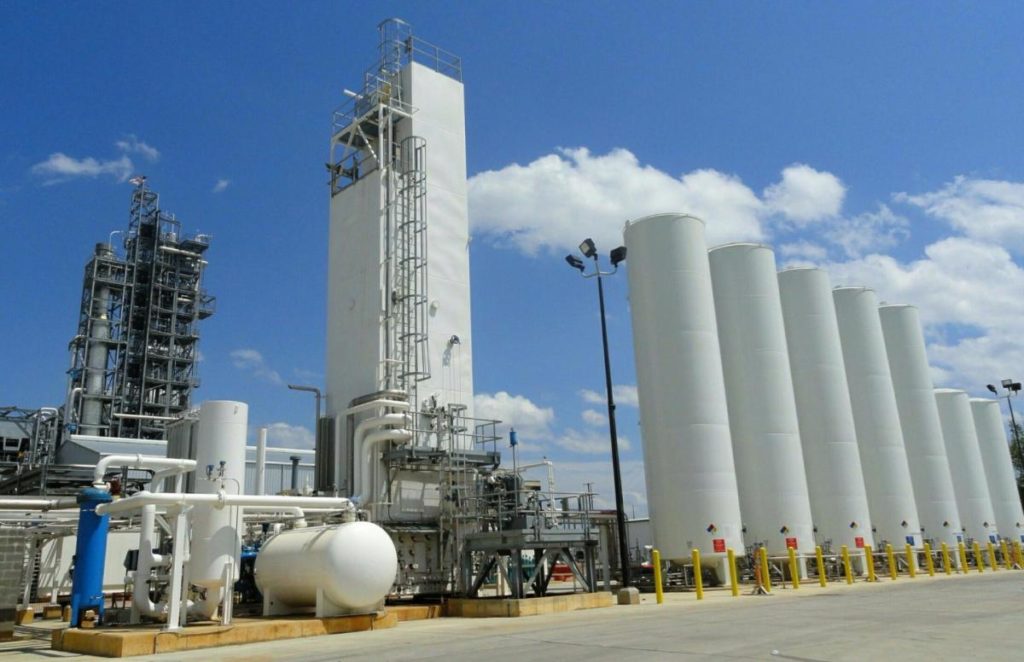
BACKGROUND
An air separation plant is separation atmospheric air into primary components, commonly nitrogen, oxygen and argon and sometime other gas such as xenom, carbon dioxide and more. The purpose air separation plant is to separate nitrogen from the air and use nitrogen in variety purpose. For example, Nitrogen usually used in purging before chemical plant operation to remove air or other chemical in the system. Nitrogen is noble gas and do not causing combustion and not easily to react with other chemicals. Nitrogen also used as preservative in food such as potato chips bags and burger meat. Nitrogen contains low moisture and low oxygen contents and low oxidation occurs. There are have several process to separate air components such as cryogenic distillation, pressure swing adsorption and membrane separation.
component in air:
Components | Percentage,% | MW | B.P. ,°C |
N2 | 78.08 | 28.01 | -195.8 |
O2 | 20.95 | 32.00 | -183.0 |
Ar | 0.93 | 39.95 | -185.8 |
CO2 | 0.038 | 44.01 | -57.0 |
He | 0.0005 | 4.00 | -268.9 |
Krypton | 0.0001 | 83.80 | -153.2 |
Neon | 0.0018 | 20.18 | -246.1 |
H2 | 0.00005 | 2.02 | -252.9 |
Xe | 0.000009 | 131.30 | -108.1 |
CRYOGENIC SEPARATION
Cryogenic separation is distillation process occur at very cold temperatures. This process occurred at specific condition and distillation process requires two phase, liquid and gas. This high purity of nitrogen can be achieved by using this process. The air will be compress until 10 bar, then it will be cooling until it become liquefy. When the pressure is high, the bubble point of compound will be increase. So, it save energy to liquefy the air.
To achieve low temperature in distillation column requires refrigeration cycle by means Joule-Thomson Effect. Joule-Thomson effect is the gas with high pressure has dropping the pressure instantly causing the temperature drop. When the gas in high pressure flow in pipeline, then go to distillation column (large area) causing the temperature drop. Then refrigeration cycle start until the component with high boiling point become liquid. The liquid phase will be at the bottom of distillation column as bottom product.
simplified process flow of air separation process (cryogenic process):

Before compression the air, air must be filtered from dust. After filter the air, the air will be compress in range 5-10 bar.
After compressing the air, the air will enter Temperature Swing Adsorption (TSA) to remove all impurities such as hydrocarbon, carbon dioxide and water to avoid equipment damage during cooling the gas. The TSA have two type adsorbent, which are Activated Alumina and Zeolite molecular sieve. Only Nitrogen, Oxygen and remaining Argon can leave from this adsorbent for cooling.
After TSA unit, the remaining air gas will going to heat exchanger for cooling down. After the cooling down, the nitrogen, oxygen and argon will enter the distillation column, then the Joule-Thomson effect will be occur. The nitrogen gas will be at the top and the oxygen will be at the bottom of distillation. Then, the product will be collected.
Libra 13X molecular sieve and activated alumina will be the best choice for pre-purification for air separation process in Temperature Swing Adsorption (TSA). Our products have been used in several air separation unit with our technical support. Don’t hesitate to contact us for more! We will support you with all our hearts!


You need a native English speaker to rewrite this foreign jumble.
I could help you for a modest fee. I am a chemical engineer with an MBA.
Thanks~ if you could sell our products in your market, I believe you could get more profit.